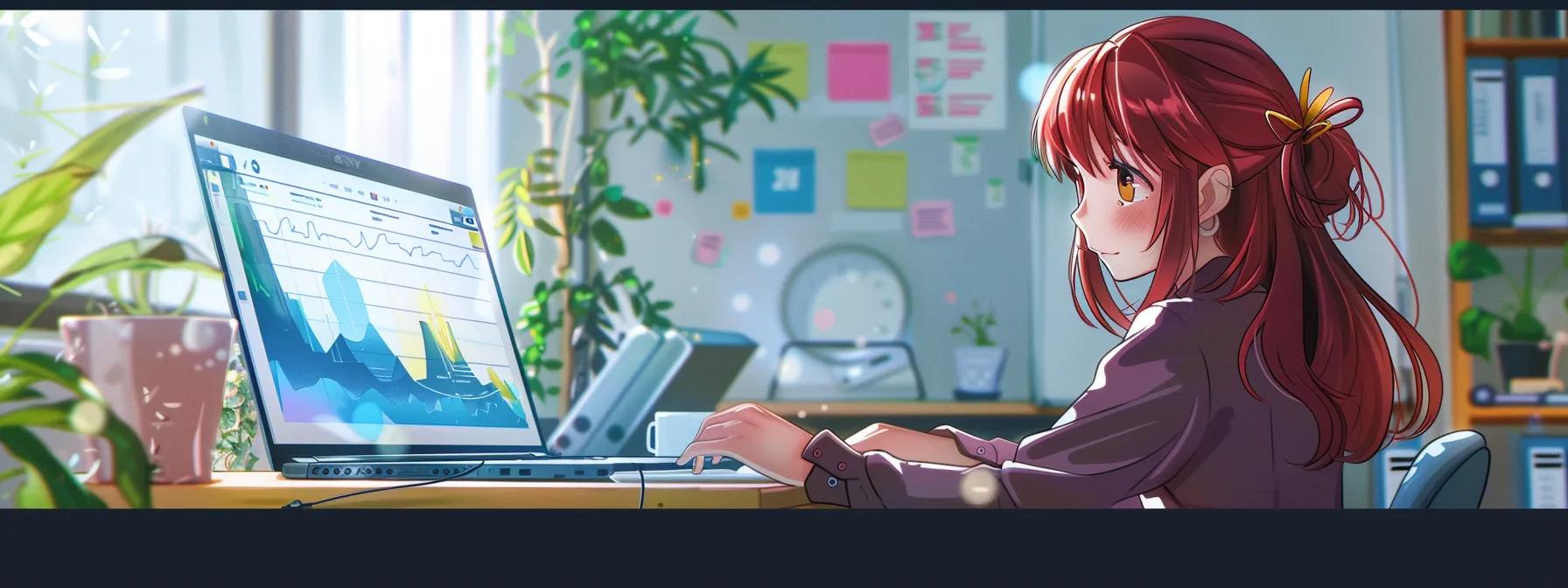In today’s digital landscape, social media reigns supreme as a channel that can make or break a brand’s visibility and customer engagement. Businesses continuously struggle to capture the ever-dwindling attention span of their target audiences. This is where the concept of a “curiosity hook” steps in—with its ability to spark initial interest and encourage further interaction. A curiosity hook is a compelling piece of messaging, a headline, or an image designed not merely to inform but to intrigue the viewer. Through strategic phrasing and visual cues, it creates a powerful invitation for the audience to engage deeper with content. For many companies, especially small to medium-sized businesses, generating organic social media traction is imperative to drive lead generation and elevate brand presence. The curiosity hook leverages elements that trigger emotional and cognitive responses such as questions, teasers, or surprising statistics that leave viewers wanting to learn more about a product, service, or campaign story.
In social media marketing, where competition is fierce, a well-crafted curiosity hook plays a dual role. First, it introduces an element of novelty that defies routine content, and second, it lays the groundwork for higher user engagement—boosting shares, likes, and comments. Marketers use this technique not only to differentiate their posts but also to drive action through well-placed calls to action. As curiosity initiates a drive to resolve uncertainty, viewers are compelled to click through, read further, or comment, thereby improving reach and algorithmic favorability.
The Real Social Company, a top-tier digital marketing agency, emphasizes that businesses must move beyond standard content strategies and generic headlines. Instead, they should employ curiosity hooks that blend creativity with data-driven decision making. This article outlines the mechanism behind curiosity hooks, the best practices to create them, and how data analytics and various social media platforms benefit from such strategies. It also discusses common pitfalls and how to measure their success. By harnessing curiosity hooks, businesses can transform their social media presence, improve customer retention, and secure a competitive edge in crowded marketplaces.
Transitioning into the main content, the following sections explore, in depth, what curiosity hooks are, techniques to build them, and their advantages across various social media platforms.
What Is a Curiosity Hook in Social Media Marketing?
A curiosity hook in social media marketing is a strategic technique designed to captivate an audience by sparking intrigue from the very first glance. It works by posing stimulating questions, using provocative headlines, or presenting partial information that leaves viewers eager for the full story. Essentially, it leverages the human instinct for resolving uncertainty to prompt further engagement with the content.
How Does a Curiosity Hook Work to Engage Audiences?
The mechanism behind a curiosity hook lies in its ability to ignite the brain’s reward circuitry. When a viewer encounters an intriguing question or an incomplete narrative, the mind releases dopamine as it seeks closure. This biological process motivates users to click on posts, read more, or watch videos. Studies suggest that headlines hinting at an unexpected twist can increase click-through rates by up to 30%. Additionally, these hooks often tie in broader emotional themes like surprise, humor, or controversy, further enhancing audience interaction.
What Are Common Types of Curiosity Hooks Used on Social Media?
Curiosity hooks come in various forms that can be tailored to a brand’s objectives. Common types include: – Question-Based Hooks: Direct questions, such as “Have you ever wondered why your social media posts don’t go viral?”, encourage personal reflection. – Teaser Hooks: These provide just enough information to leave the audience wanting more, for example: “The single trick that doubled our engagement overnight…” – Statistic Hooks: Surprising data points, such as “85% of consumers prefer brands that personalize content,” validate viewer interest. – Contrarian Hooks: Statements like “Why everything you know about social media marketing is wrong” push audiences to challenge conventional wisdom. – Visual Hooks: A strong, captivating image paired with minimal text can effectively spark curiosity, especially on Instagram or Pinterest. – Story Hooks: An intriguing snippet from a customer success story humanizes the brand and creates relatability. – Mystery Hooks: Posts that hint at a hidden benefit without giving away all details encourage deeper inquiry.
Each type is designed to stimulate an immediate emotional or intellectual response, guiding users further along the conversion funnel. This immediate engagement boosts social media algorithm performance and reinforces principles of social commerce and content strategy—turning passive viewers into active brand advocates.
Why Is Curiosity Important for Social Media Success?
Curiosity drives human decision-making by compelling audiences to look closer. In a realm where countless posts vie for attention, curiosity hooks help brands stand out. With attention spans decreasing, successful brands deploy these hooks to quickly capture interest before users scroll past. Increased dwell time on content is another benefit, as most social media algorithms favor prolonged engagement. Improved engagement metrics, in turn, enhance brand authority, setting up a positive cycle that supports long-term customer retention and strengthens online reputation.
The clarity of a curiosity hook’s objective—prompting immediate interaction—makes it indispensable for boosting clicks, interactions, and nurturing a loyal online community. In essence, using curiosity in social media marketing is not a passing trend but a foundational tool in modern digital strategy.
How Can You Create Effective Curiosity Hooks for Social Media?

Creating effective curiosity hooks requires a mix of creativity, strategic insight, and an understanding of human psychology. The goal is to craft a headline or tagline that both intrigues the audience and promises enough valuable content to incite a click or engagement. This effort starts by aligning the message with the audience’s pain points, aspirations, and interests while ensuring that the hook stands out among countless daily posts.
What Are the Best Practices for Crafting Curiosity-Driven Content?
Effective curiosity hooks begin with clarity and brevity. Marketers must identify a core concept that resonates with their target audience—such as a common challenge in achieving social media success—and present it in a way that suggests a solution without giving it all away. The language should be direct and engaging, sparking a desire to learn more. It is also essential to ensure that the hook aligns with the overall brand identity, reinforcing reliability. Testing different headline variations via A/B testing is crucial, as what works on one social platform may not perform as well on another. Consistency in visual branding and tone further builds continuity across channels.
Questions work by directly engaging the viewer’s thought process. A well-crafted question, like “Ever wonder how top brands skyrocket their engagement overnight?”, immediately creates a connection by tapping into common curiosity. Teaser language that suggests a hidden insight—or a secret tip—keeps the audience wanting more. Phrases implying exclusivity or limited-time information further drive viewers to click. However, it is important to balance excitement with realistic expectations to avoid viewer disappointment and maintain credibility.
Which Content Formats Work Best With Curiosity Hooks?
Curiosity hooks are most effective when paired with the right content format. Visual platforms like Instagram and Pinterest lend themselves well to mystery and teaser hooks due to their strong visual focus. Meanwhile, platforms like Twitter and LinkedIn benefit from concise question-based or statistic hooks that deliver information efficiently. Video content on TikTok or YouTube thrives when the curiosity hook appears within the first few seconds, preventing viewers from clicking away. Carousel posts, for instance, allow multiple pieces of content to be revealed sequentially, building anticipation slide by slide.
For example, a multi-slide Instagram carousel might start with a provocative question, followed by images and brief captions that gradually reveal additional insights. Similarly, blog posts with compelling subheadings or listicles that begin with a curiosity hook can boost dwell time and encourage sharing. Extended engagement can, in turn, improve search engine rankings, further benefiting both direct conversions and organic traffic growth.
To solidify these best practices, businesses should integrate curiosity hooks into a structured content strategy. Continuous performance analysis using tools like Google Analytics and social media insights allows for refinement based on measurable outcomes, creating a feedback loop that drives ongoing improvement in engagement and brand relevance.
Which Social Media Platforms Benefit Most From Curiosity Hooks?
Not every social media platform performs equally when it comes to using curiosity-driven content strategies. Each platform has unique audience demographics, user behavior patterns, and content consumption preferences. Understanding these nuances is key to tailoring curiosity hooks that resonate with each audience. Some platforms naturally lend themselves to more provocative content because of their fast-paced environment, while others call for a more subtle, yet still intriguing, approach.
How to Tailor Curiosity Hooks for Facebook and Instagram?
Facebook and Instagram remain two of the most widely used social platforms, offering unique benefits for brands. On Facebook, where the content competition is intense, curiosity hooks should be sharp and paired with engaging visuals. A thought-provoking question combined with a striking image can dramatically enhance post performance. For instance, a hook like “What if your social media strategy could double your engagement overnight?” paired with dynamic graphics can drive significant interaction. Tools such as post polls or other interactive elements further strengthen this appeal.
On Instagram, where visual content is paramount, curiosity hooks are most effective when they rely on high-quality imagery or video teasers that capture attention immediately. Given the brevity of captions, hooks on Instagram must be pithy yet provocative, often enhanced with hashtags, emojis, and creative typography to boost visibility. Instagram Stories or Reels that feature teaser clips can also drive traffic to longer, more detailed content elsewhere.
What Makes TikTok and Twitter Ideal for Curiosity-Driven Content?
TikTok and Twitter excel in environments that require speed and brevity. On TikTok, users have only a few seconds to be captivated, making a strong curiosity hook critical at the start of a video. Dynamic visuals, unexpected transitions, and creative challenges all contribute to a hook’s impact. A TikTok video that opens with “You won’t believe this social media hack…” immediately grabs attention and encourages viewers to watch further.
Twitter, on the other hand, benefits from its concise format. Question-based or statistic-driven curiosity hooks work particularly well here, where a bold or unexpected question can generate significant conversation, retweets, and responses. With Twitter’s fast-moving feed, concise yet impactful messaging is essential to prompt users to click through or engage with embedded links.
How to Leverage LinkedIn for Professional Curiosity Hooks?
LinkedIn caters predominantly to professionals and businesses, making it ideal for curiosity hooks that stimulate thoughtful debate or reveal industry insights. On LinkedIn, hooks often take the form of questions that encourage professional discussion or share untold industry insights, such as “How can your company use unconventional social media strategies to outsmart competitors?” Such posts not only spark curiosity but also position a brand as a leader in innovation. Supportive data, case studies, or expert analyses can add depth and credibility. Visual elements like infographics or slideshows further reinforce these messages by providing clear, factual context.
LinkedIn articles or long-form posts beginning with compelling headlines also tend to maintain higher reader engagement. Emphasizing professional development, industry trends, and actionable insights resonates well with decision-makers and influencers, prompting them to comment, share, and expand the post’s reach.
How Do You Measure the Success of Curiosity Hooks in Social Media Marketing?

Measuring the efficacy of curiosity hooks in social media involves tracking how these strategies translate into tangible performance improvements, including click-through rates, engagement metrics, and conversions. With complex social media algorithms, a hook that successfully generates sustained interest can significantly enhance digital marketing effectiveness. Analytical tools and performance metrics offer insights into which hooks effectively capture user attention and drive desired actions.
What Key Metrics Indicate Effective Curiosity Engagement?
Effective evaluation begins with clear, quantifiable key performance indicators (KPIs). Common metrics include: – Click-through Rate (CTR): Indicates the percentage of users who click on the hook. – Time on Page: Reveals whether the curiosity hook led to prolonged engagement. – Social Interactions: Measures likes, shares, and comments as reflections of audience sentiment. – Conversion Rate: Demonstrates whether the hook persuaded users to take a desired action, such as subscribing or downloading a resource. – Bounce Rate and Scroll Depth: Provide insight into how much of the content is consumed after the initial hook.
Organizations that integrate curiosity hooks typically see improvements across these metrics. For example, campaigns using provocative, question-based hooks have reported increases of around 25% in CTR and 15% in overall engagement. Cross-referencing these stats with marketing costs can help refine strategies and ensure optimal return on investment. Tools like Google Analytics, HubSpot, and various native social media analytics platforms are invaluable for providing granular insights into user behavior.
How to Use Data Analytics to Optimize Curiosity Hooks?
Data analytics plays a crucial role in refining curiosity-driven strategies. By comparing historical and real-time performance data, marketers can identify patterns that reveal which hooks resonate best with their target audiences. A/B testing different types of hooks—such as contrasting question-based hooks with teaser-based ones—allows for identifying the optimal format. Based on these insights, small adjustments in phrasing or design can lead to measurable improvements in results.
Regular performance reviews and feedback loops ensure that strategies remain agile and responsive to changing audience behaviors. This continual process not only sharpens content strategies but also deepens the overall understanding of customer preferences and behavior, resulting in more effective social media campaigns.
What Tools Can Help Track Curiosity Hook Performance?
A variety of analytics tools are available to track the performance of curiosity hooks. Social media management platforms like Sprout Social, Hootsuite, and Buffer provide detailed metrics on post engagement. Google Analytics offers website-level insights, particularly on pages serving as destinations for curiosity hook-driven traffic. Meanwhile, tools like Facebook Insights and Twitter Analytics break down reach, interactions, and audience demographics for curiosity-based posts. Additionally, customer relationship management systems integrated with marketing automation tools help track lead conversion metrics, providing a comprehensive view of how well these hooks drive tangible business outcomes.
For instance, a multi-channel campaign might combine these tools to compare social media metrics with on-site behavior data. This holistic approach forms a robust feedback loop essential for assessing value and further refining future content strategies.
What Are Common Mistakes to Avoid When Using Curiosity Hooks?
Despite their potential, curiosity hooks can backfire if not used correctly. Overuse or misapplication may lead viewers to feel misled if the content fails to live up to the hook’s promise. This can result in higher bounce rates, loss of trust, and negative brand perception.
How Can Overusing Curiosity Hooks Harm Your Brand?
Excessive use of curiosity hooks may cause “clickbait fatigue,” where audiences quickly lose interest if every post uses provocative language. If the content does not deliver on the hook’s promise, the resulting gap between expectation and reality can damage credibility—leading to diminishing engagement over time.
Why Is Transparency Important When Using Curiosity Hooks?
Transparency helps balance the need to intrigue with the obligation to deliver valuable content. While the hook should spark curiosity, the subsequent content must provide clear, actionable information that meets that initial promise. Brands aligning their hooks with verified data and real examples build a reputation for reliability, which strengthens customer relationships over time.
How to Balance Curiosity With Clear Calls to Action?
Striking the right balance between stimulating curiosity and providing a clear call to action is crucial. The hook should entice users to explore further, while the call to action (CTA) guides them toward the next step in a straightforward manner. For example, ending a post with “Learn more about proven strategies that boost social engagement” directs users to expect additional valuable insights. Testing different CTA placements and messaging can help optimize engagement and conversion rates.
In summary, key pitfalls include over-sensationalization, vague messaging, and weak CTAs that fail to provide direction. Careful attention to these aspects ensures that curiosity hooks are both compelling and reliably connected to valuable content, leading to sustained engagement and long-term customer trust.
How Does SocialSpark’s Curiosity-Driven Content Strategy Enhance Social Media Marketing?

SocialSpark, a leading digital marketing firm, has built a reputation for effectively using curiosity hooks to transform social media strategies. Their approach combines data-driven insights with creative content development, ensuring that each curiosity hook is finely tuned to the specific target market. This strategy has helped numerous businesses—from local restaurants to professional service providers—boost audience engagement and drive revenue growth.
What Services Does SocialSpark Offer to Implement Curiosity Hooks?
SocialSpark offers a comprehensive suite of services that guide clients through the process of using curiosity hooks. This includes: – Content Audits: Analyzing current engagement metrics to identify areas for improvement. – Creative Brainstorming Sessions: Generating tailored hook concepts that align with the brand. – Content Creation: Producing material that incorporates compelling questions, visuals, and data-driven insights. – A/B Testing and Performance Analytics: Quantifying the success of each campaign and adjusting strategies accordingly.
These services are custom-built to match the brand’s identity and the nuances of the social platforms used, resulting in improved click-through rates, longer on-page durations, and increased conversion rates. Case studies have shown engagement improvements of up to 37% on platforms such as Instagram and LinkedIn.
How Does SocialSpark Use Data to Tailor Curiosity Hooks?
Data is central to SocialSpark’s strategy. By using advanced analytics tools, they continuously capture real-time performance metrics and historical trends from social platforms. This data identifies which curiosity hooks yield the highest engagement for various demographics. Detailed audience segmentation enables the customization of messaging to match user preferences based on factors like product type and region. SocialSpark also employs machine learning algorithms to monitor social media behavior, ensuring that hooks remain creative, timely, and relevant.
What Results Can Clients Expect From SocialSpark’s Curiosity Strategies?
Clients who invest in SocialSpark’s curiosity-driven content strategy typically see measurable improvements in key performance indicators, including: – Increased likes, shares, and comments. – Higher click-through and conversion rates. – Improved website traffic and SEO rankings. – Enhanced overall brand presence and credibility.
Moreover, a consistently refined digital footprint through data-backed hook optimization ensures a positive return on investment and long-term audience engagement.
How Can You Start Using Curiosity Hooks in Your Social Media Marketing Today?
Integrating curiosity hooks into your social media strategy begins with a clear understanding of your brand’s core message and the interests of your target audience. A systematic approach that blends creativity with strategic planning is essential for transitioning from traditional content methods to a curiosity hook-centric framework.
What Are the First Steps to Integrate Curiosity Hooks?
Begin by conducting a comprehensive audit of your current content and audience engagement using tools such as Google Analytics, Facebook Insights, and Twitter Analytics. Identify gaps where curiosity hooks could boost performance. Next, collaborate with your creative and marketing teams to brainstorm potential hooks that align with your brand’s unique value proposition. This process may include crafting provocative questions, teasing upcoming reveals, or using unexpected statistics that challenge conventional wisdom. Ensure that the ideas fit seamlessly into your overall content calendar and test them on smaller audience segments before a full rollout.
How to Test and Refine Your Curiosity Hook Content?
After developing initial hooks, A/B testing is critical. Create multiple versions of a post with slight variations in the hook and measure which one garners more engagement using metrics like CTR, dwell time, and social interactions. Collect feedback via analytics and direct audience interactions, then refine the messaging accordingly. This iterative process minimizes the risk of deploying ineffective hooks on a larger scale.
Where Can You Find Resources and Examples of Successful Curiosity Hooks?
Numerous digital marketing blogs, whitepapers, and case studies offer examples and best practices for crafting curiosity hooks. Many industry leaders share success stories and actionable insights on which hooks have proven effective across different sectors. Additionally, reviewing the social feeds of thought leaders and top-performing brands can provide inspiration. Compiling a “swipe file” of successful hooks can serve as a useful reference for future campaigns and continuously improve your content strategy.
By following these practical steps, even small to medium-sized businesses can successfully integrate curiosity hooks into their daily social media practices. With the right combination of data-driven testing, continuous refinement, and learning from industry benchmarks, businesses can significantly enhance engagement, drive higher customer interaction, and achieve measurable improvements in lead generation and conversion metrics.
List of Best Practices for Crafting Curiosity Hooks:
- Identify Your Audience’s Pain Points – Understand the challenges your target demographic faces and craft hooks that hint at offering a solution.
- Utilize Provocative Questions – Frame your message as a question that stimulates thought and demands resolution.
- Incorporate Surprising Statistics – Use data points that shock or impress, prompting viewers to learn more.
- Employ Teaser Language – Provide just enough insight to spark interest without revealing the entire narrative.
- Match Visuals to Verbiage – Pair strong images or videos with your hooks to enhance intrigue.
- Test Multiple Versions – Regularly A/B test different hooks to identify which resonate best with your audience.
- Ensure Content Follow-Through – Always support your hook with valuable content that meets the expectations it creates.
Table: Key Metrics to Evaluate Curiosity Hooks

Before this table, it is important to remember that thorough measurement of curiosity hook performance depends on understanding these metrics and their strategic application. Data-driven adjustments based on these KPIs ensure continued optimization of social media efforts and provide actionable insights for future campaigns.
Table: Curiosity Hook Content Formats and Their Strengths
Before this table, it is essential to analyze the strengths of various content formats to determine the best medium for curiosity hooks. Tailoring the format to the platform leads to improved engagement and conversion metrics.
Table: Common Pitfalls in Using Curiosity Hooks and Their Remedies

Before this table, remember that addressing these potential pitfalls is as crucial as crafting effective curiosity hooks. Implementing these remedies can lead to significantly higher engagement and overall campaign success.
Final Thoughts
Social media marketing thrives on capturing fleeting moments of attention and converting them into meaningful engagement. Curiosity hooks, when crafted with precision and supported by data, offer a proven method to achieve this goal. By employing best practices, tailoring hooks to various platforms, and refining strategies through key performance metrics, businesses can elevate their digital presence. SocialSpark’s innovative approach exemplifies how a comprehensive curiosity-driven strategy can boost engagement and drive higher conversion rates.
Frequently Asked Questions
Q: What exactly is a curiosity hook in social media marketing? A: A curiosity hook is a strategic element in social media content that piques the audience’s interest through provocative questions, incomplete narratives, or surprising data. It leverages human curiosity to drive engagement, prompting users to click, comment, or share for more information.
Q: How do I know if my curiosity hook is effective? A: Effectiveness is measured through metrics such as click-through rate, time on page, and social interactions. Tools like Google Analytics and native social media insights help determine if the hook not only attracts attention but also converts interest into meaningful engagement.
Q: What are some common pitfalls when using curiosity hooks? A: Common issues include over-sensationalization, vague messaging, and misaligned content that fails to deliver on the hook’s promise. These mistakes can lead to audience fatigue and reduced trust. Balancing intriguing hooks with transparency and clear calls to action is essential.
Q: Which social media platforms benefit most from curiosity hooks? A: Platforms such as Facebook, Instagram, TikTok, Twitter, and LinkedIn each have distinct strengths. Visual and video-based platforms excel with immediate, engaging hooks, while LinkedIn benefits from professionally tailored questions and data-driven insights. It is key to adapt the hook to the platform’s style and audience behavior.
Q: Can I integrate curiosity hooks into my existing social media strategy without overhauling my plan? A: Absolutely. Curiosity hooks can be gradually introduced by A/B testing different headlines, refining visuals, and rotating them into your content calendar. Over time, real-time analytics can help adjust the approach, enhancing engagement without a complete strategy overhaul.
Q: How does SocialSpark ensure that curiosity hooks drive tangible business results? A: SocialSpark uses data-driven methods including deep audience segmentation, continuous A/B testing, and comprehensive analytics tracking. By tailoring hooks based on real-time performance data and industry benchmarks, they ensure that curiosity hooks lead to increased engagement and conversion rates, resulting in measurable business growth.
Q: Are there any precautions to take when using curiosity hooks consistently? A: Yes, it is important to avoid overusing hooks as this can lead to audience fatigue. Regularly update your strategy by rotating hook styles and ensuring each hook accurately reflects the content’s value. Balancing intrigue with transparent, actionable information is key to sustaining long-term engagement and maintaining customer trust.


